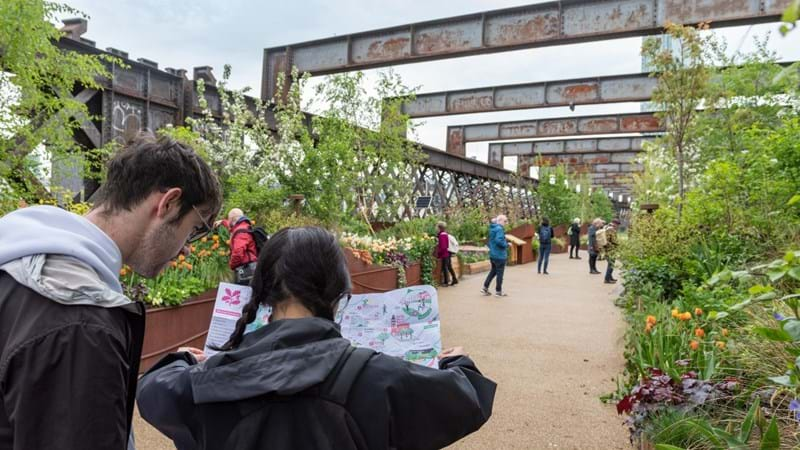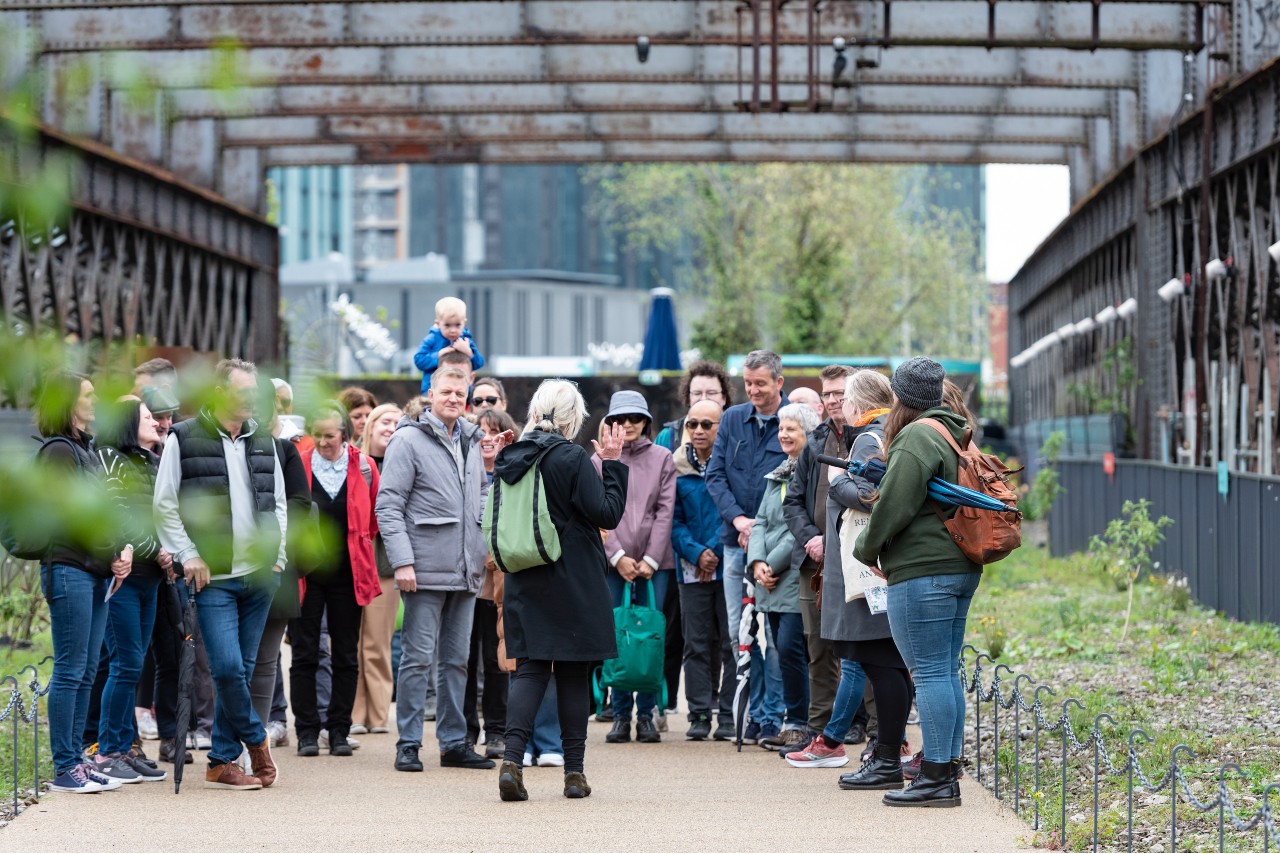Celebrating one year of Manchester’s ‘garden in the sky’
Published
20 Jul 2023
Castlefield Viaduct celebrates its one-year anniversary this week. We’re looking back at how this pioneering project transformed Manchester’s skyline.

Share this article
Inspired by New York’s High Line, the Castlefield Viaduct is the result of a unique partnership between National Highways and the National Trust, alongside lead community partner Castlefield forum and other local groups.
It was back in February 2022 that work started on the transformation of the 130-year-old viaduct, into a floating urban park. Sitting derelict for decades the idea of bringing it back into use had been discussed for years. In 2021, following public consultation, Manchester city council granted a temporary planning application to test some concepts and gather feedback on what something more permanent could be.
National Trust’s strategy ‘For everyone, for ever’ focusses on providing people will access to nature forever. Their vision for the space was for half of structure to become explorative walkway, surrounded by plants and flowers, giving visitors the chance to connect with nature and learn about history.
Urban places programme manager for National Trust Sophie Bourne said: “We’re particularly interested in addressing unequal access to history, nature, and beauty. We know that it’s needed most in urban areas or cities, Manchester is underserved for green spaces. Castlefield viaduct sits in the centre of the city, bringing history, nature, and beauty together so offered a huge opportunity for National Trust to try something innovative.”
Our role is to care for and maintain the structure on behalf of its owner Department for Transport, one of 337 structures we look after in the North West. We worked very closely with National Trust and the project team to ensure that the viaduct’s new use could be accessed and used safely by the public.
Opening in July 2022 the space was well received by not only the local community, but visitors to the city with the project going on to win a Pineapple for Infrastructure Award in 2023, fighting off stiff competition from 70 other shortlisted projects.
Key figures
- 52,000 residents living nearby to the viaduct don’t have private gardens
- 12,000 people have visited since opening in July. Numbers have been managed with tickets and restricted for safety reasons
Visitor feedback
- 98% of visitors want access to the site permanently
- 66% of visitors have felt better after spending that time in nature
- 75% of visitors felt more pride in Castlefield and in their city
- 70% have felt better informed about history of the area following a visit
How the project came about
Working together with National Trust, Castlefield Forum, Manchester City Council, Greater Manchester Combined Authority – there was shared ambition to do something with the viaduct.
Castlefield’s former industrial roots remain, resulting in small amounts of city centre green space. More and more cities close by are seeing huge growth – 52,000 living nearby to the viaduct don’t have access to gardens.
The covid pandemic and eventual lockdowns highlighted the importance of nature and people’s need to connect with nature. National Trust got to work – feedback from the Castlefield Forum showed a desire for more nature and whatever the transformation was it needed to have real purpose.
Visitors now get to not only connect with nature, enjoy some wonderful views of the city skyline but also learn about the area’s incredible industrial heritage.

History of the area and viaduct
Built in 1892 by the Manchester-based engineering firm behind the iconic Blackpool Tower, Heenan & Froude, the viaduct was built toward the end of ‘railway mania’ carrying heavy rail traffic in and out of Manchester Central railway station for more than seven decades.
This 330-metre-long steel viaduct sits in Castlefield, the oldest part of the city of Manchester. Once the site of the Roman fort of Mamucium and later a central hub for the industrial revolution, Castlefield is an area of rich history. Read more about the town’s past and secrets via the National Trust.
The station was closed in 1969 and with it the need for the viaduct to carry rail, the structure remained closed to the public – enjoyed from the ground or viewed on new trams transporting people between the city.
What’s next?
Following a trial period, the project has been extended. It will be transferred to Railways Path Limited for its long-term future.
Find out more on Castlefield viaduct, the area’s history and how to visit via the National Trust website.
A decade of caring for Britain’s railway heritage
Since 2013 National Highways has been looking after the Historical Railways Estate (HRE) on behalf of the government.
Today we’re responsible for over 3,100 former railways structures across England, Scotland and Wales, some of which date back to the 19th century.
We work hard to keep the structures safe. We work with a range of specialists to consider the environmental, historical and community impact of our work.
Where we can, we give structures a new lease of life. Many have been repurposed into walkways and cycle paths.
Images ©National Trust Images Paul Harris
